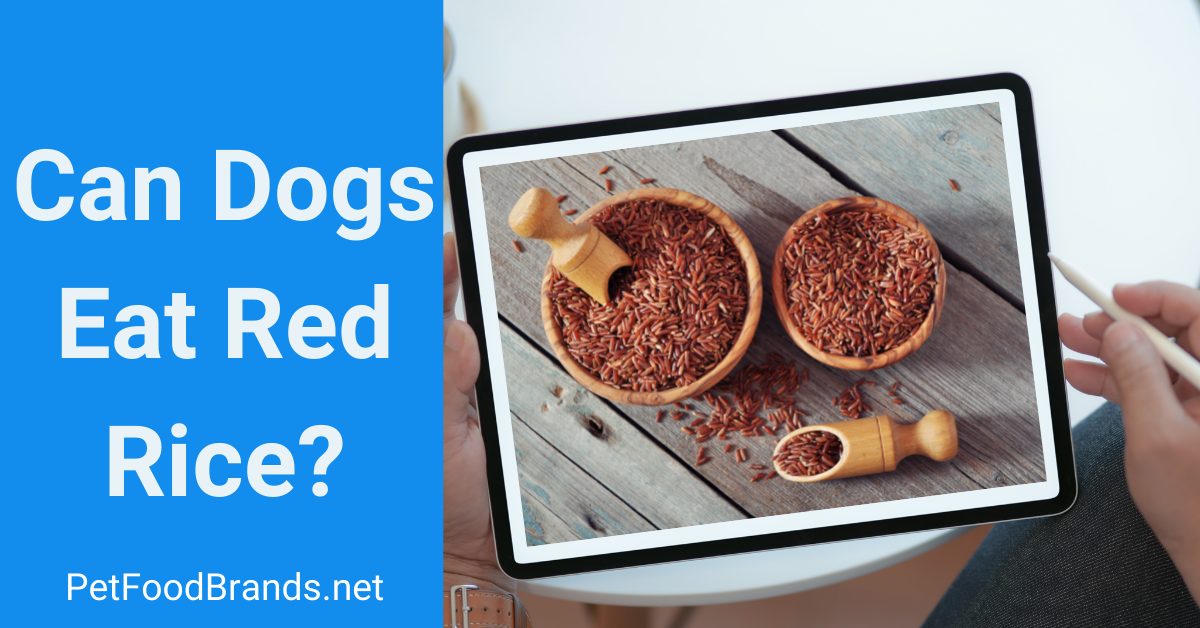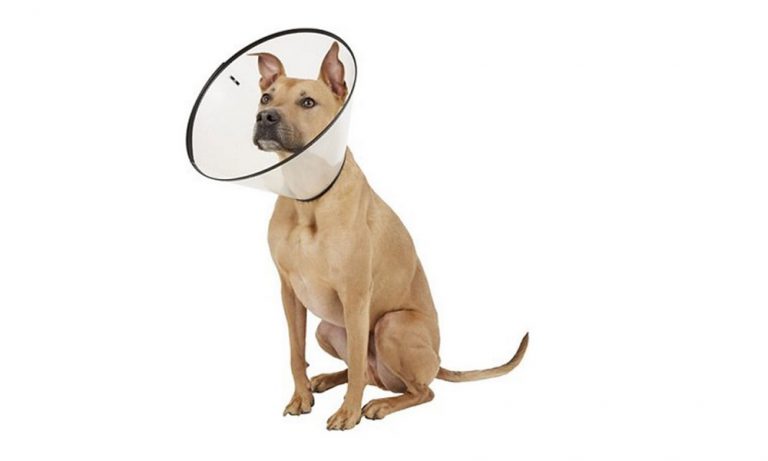Can Dogs Eat Red Rice?
Dogs can eat red rice, but it should be done in moderation. Red rice is a great source of fiber and contains essential vitamins and minerals that are beneficial for canine health. However, like any food, too much of this grain can lead to digestive issues or allergies in some dogs.
Be sure to consult with your veterinarian before including red rice as part of your pup’s diet to ensure the best possible nutrition for your furry friend!
Benefits of Red Rice for Dogs
Red rice can offer some potential benefits for dogs when included in their diet in moderation. Here are some of the advantages of feeding red rice to dogs:
- Nutritional Value: Red rice is a whole grain and is generally more nutritious compared to highly processed white rice. It contains essential nutrients like fiber, vitamins, and minerals that can contribute to a balanced diet for your dog.
- Fiber Content: Red rice is a good source of dietary fiber, which can aid in digestive health for dogs. It can help regulate bowel movements, prevent constipation, and support overall gastrointestinal function.
- Energy Source: Like other types of rice, red rice provides carbohydrates, which serve as an energy source for dogs. Carbohydrates are an important component of a balanced canine diet, especially for active dogs.
- Low Fat: Red rice is naturally low in fat, making it a suitable option for dogs that require a low-fat diet due to specific health conditions, such as pancreatitis or obesity.
- Hypoallergenic: Red rice may be a suitable choice for dogs with food sensitivities or allergies, as it is less likely to trigger allergic reactions compared to some other grains or ingredients.
- Weight Management: The fiber content in red rice can help dogs feel fuller for longer, which may aid in weight management and preventing overeating.
While red rice can be beneficial for dogs, it’s essential to prepare it properly and serve it in moderation. Here are some considerations:
- Cooking: Always cook red rice thoroughly before offering it to your dog. Ensure it’s soft and easy to digest.
- Portion Control: Introduce red rice gradually into your dog’s diet and monitor their response. Too much rice can lead to weight gain or digestive upset.
- Mix with Other Foods: Red rice can be combined with other ingredients like lean proteins and vegetables to create a balanced meal for your dog.
- Consult Your Veterinarian: If you have specific dietary concerns or questions about feeding red rice to your dog, consult your veterinarian for guidance tailored to your pet’s individual needs.
Remember that every dog is unique, and their dietary requirements may vary based on factors such as age, breed, activity level, and health status. While red rice can be a valuable addition to your dog’s diet, it should be part of a well-rounded and balanced meal plan that meets their specific nutritional needs.
Best Rice for Dogs With Diarrhea
When a dog has diarrhea, feeding them a bland diet can often help soothe their upset stomach and firm up their stools. One of the best types of rice for dogs with diarrhea is plain, white, long-grain rice. Here’s why:
-
Digestibility: White rice is highly processed and easily digestible, making it less likely to irritate your dog’s sensitive stomach during bouts of diarrhea.
-
Low Fiber: Compared to brown or whole-grain rice, white rice has lower fiber content. While fiber is essential for regular bowel movements, it can exacerbate diarrhea, so lower-fiber rice is preferred during this time.
To prepare a bland diet for a dog with diarrhea, you can cook plain white rice and pair it with a lean protein source like boiled chicken or turkey. This combination provides easily digestible carbohydrates and essential amino acids, helping to soothe the digestive system and provide necessary nutrients.
Here’s how to prepare a bland diet for a dog with diarrhea:
-
Cook plain white rice until it’s fully cooked and soft.
-
Boil skinless, boneless chicken or turkey until it’s fully cooked. Make sure there are no seasonings or additives.
-
Mix the cooked rice and lean protein in a ratio of approximately 1 part protein to 2 parts rice.
-
Serve small, easily digestible portions to your dog. Monitor their response and adjust the portion size based on their needs.
-
Gradually transition your dog back to their regular diet over a few days once their stools have firmed up and they’re feeling better.
Always consult your veterinarian if your dog’s diarrhea is severe, persistent, or accompanied by other concerning symptoms. They can provide guidance on the best course of action and any necessary treatment.
White Rice for Dogs
White rice is an excellent source of carbohydrates for dogs. It provides energy and gives the dog a feeling of fullness. Dogs can digest it easily and it is often recommended to be added to their diet in small amounts, particularly when they are suffering from digestive issues or recovering from surgery.
Additionally, white rice can help bind loose stool which may occur due to dietary indiscretions or other health conditions.
Can Dogs Eat Basmati Rice When Sick?
Yes, dogs can eat basmati rice when they are sick, and it can be a helpful component of a bland diet for dogs with digestive issues or mild stomach upset. Basmati rice is a type of long-grain rice that is easy to digest and less likely to cause gastrointestinal irritation compared to some other grains.
A bland diet for a sick dog typically consists of boiled white rice and a lean protein source, such as boiled chicken or boiled ground turkey. The rice serves as a source of easily digestible carbohydrates, while the protein provides essential amino acids.
This combination can help soothe your dog’s stomach and provide them with the necessary nutrients during a period of illness. Here are some guidelines for feeding basmati rice to a sick dog:
- Cook the Rice: Boil the basmati rice thoroughly and ensure it’s fully cooked, soft, and easy to digest. Avoid adding any seasonings, oils, or spices.
- Mix with Lean Protein: To create a balanced meal, you can mix the cooked basmati rice with lean, cooked, and unseasoned protein like chicken or turkey. Ensure the meat is skinless and boneless.
- Portion Control: Serve small, easily digestible portions to prevent overfeeding. The exact amount should depend on your dog’s size and the severity of their illness. It’s best to consult your veterinarian for specific feeding recommendations.
- Monitor Your Dog: Keep a close eye on your dog’s condition while they are on a bland diet. If their symptoms worsen or do not improve within a day or two, or if they develop other concerning symptoms, consult your veterinarian promptly.
- Gradual Transition: When your dog’s illness subsides, gradually transition them back to their regular diet over a few days to prevent digestive upset.
It’s important to note that while a bland diet can be beneficial for mild stomach upset, it may not be appropriate for all types of illnesses. If your dog’s illness is severe, if they have chronic health issues, or if they are not improving with a bland diet, it’s crucial to consult with your veterinarian for a proper diagnosis and treatment plan tailored to your dog’s specific needs.
Wild Rice for Dogs
Wild rice is an excellent grain to add to your dog’s diet as it is a nutrient-dense superfood. It contains high amounts of protein, fiber, and essential vitamins and minerals that can help support healthy growth and development in dogs.
In addition, wild rice helps improve digestion, supports joint health, strengthens the immune system, and maintains cardiovascular health. As with any dietary change for your pet, check with your veterinarian before introducing wild rice into their diet.
Can We Give Red Rice to Dog?
No, you should not give red rice to your dog. While it is true that some dogs may enjoy the taste of this type of rice and it does contain some nutrients beneficial for dogs, there are a few important reasons why you should avoid feeding your pup red rice.
Firstly, red rice contains higher levels of arsenic than white or brown varieties which can be toxic for animals if consumed in large quantities. Secondly, since processed pet food has been carefully formulated to provide a balanced diet with all the essential vitamins and minerals needed by your dog, adding any unprocessed grains such as red rice could potentially lead to nutritional imbalances over time.
Finally, similar to humans who can suffer from digestive problems when they consume too much white or brown rice; dogs may also experience indigestion or diarrhea after eating significant amounts of red rice due to its high fiber content. For these reasons we recommend avoiding giving your furry friend any form of unprocessed grain products including red rice!
Can Dogs Have Red Rice Or Brown Rice?
When it comes to feeding your dog, you may be wondering if giving them rice is a good option. While there are some benefits to adding cooked grains like brown or red rice into your dog’s diet, it should only be done in moderation and with certain precautions. Red and brown rice are both high in fiber which can help regulate digestion in dogs, especially those suffering from constipation or diarrhea.
Additionally, they provide a healthy source of carbohydrates that can help fuel energy levels throughout the day. The downside is that these types of grains need to be cooked thoroughly before being served as raw or undercooked versions can contain bacteria such as E.coli which could make your pet very sick.
It’s also important to note that many dogs do not digest grains well so if you decide to give them some rice as an occasional treat then opt for white varieties instead as they have already been processed and broken down for easier digestion. Overall, yes, dogs can eat red or brown rice but this should always come after consulting with your vet first about any potential risks associated with either type of grain!
What Kind of Rice is Best for Dogs?
When it comes to feeding rice to dogs, the best type of rice to use is typically plain, white, long-grain rice. This type of rice is easily digestible and less likely to cause gastrointestinal upset compared to other varieties. Here’s why white long-grain rice is often recommended for dogs:
- Digestibility: White long-grain rice is processed and refined, which means it has had the outer bran and germ layers removed. This makes it easier for dogs to digest and less likely to irritate their stomachs.
- Low Fiber: Compared to brown or whole-grain rice, white rice has lower fiber content. While fiber is essential for a healthy diet, too much can cause digestive upset in dogs, especially when they are already experiencing gastrointestinal issues.
- Neutral Flavor: White rice has a mild and neutral flavor, which makes it less likely to cause food aversions or allergies in dogs.
When using rice for specific purposes, such as a bland diet for dogs with upset stomachs or diarrhea, you can cook white long-grain rice and pair it with a lean protein source like boiled chicken or turkey. This combination provides easily digestible carbohydrates and essential amino acids, helping to soothe the digestive system.
While white long-grain rice is the preferred choice, it’s essential to remember that rice should only be part of a balanced diet for your dog. It should not replace their regular dog food unless recommended by your veterinarian for a specific dietary purpose. Additionally, always ensure that the rice is cooked thoroughly and served plain, without added seasonings, spices, or oils, which can be harmful to dogs.
What Kind of Rice Can Dogs Not Eat?
While plain, white, long-grain rice is generally considered safe and easily digestible for dogs, there are some types of rice that dogs should not eat, as they can be harmful. Here are types of rice that should be avoided for dogs:
- Wild Rice: Wild rice, although not toxic, can be harder to digest for dogs due to its higher fiber content and tougher outer shell. It may not be as gentle on their digestive system, especially if they have a sensitive stomach.
- Brown Rice: Brown rice is another type of rice that is higher in fiber and can be more difficult for some dogs to digest. While it’s not toxic, it’s not the best choice for dogs with digestive issues or sensitive stomachs.
- Seasoned or Flavored Rice: Dogs should never consume rice that has been seasoned, flavored, or cooked with spices, oils, or additives. These ingredients can be harmful and lead to digestive upset or other health issues in dogs.
- Rice Dishes with Ingredients Harmful to Dogs: Rice dishes that contain ingredients toxic to dogs, such as onions, garlic, raisins, or chocolate, should be avoided at all costs. These ingredients can be highly toxic and even life-threatening to dogs.
- Raw Rice: Feeding your dog raw rice is not recommended, as uncooked rice can expand in their stomachs when they eat it, potentially causing digestive issues and discomfort.
- Rice Cakes and Snacks: Many rice cakes and snacks for humans are flavored or seasoned with ingredients that are not safe for dogs. Always check the ingredient list before offering any rice-based snacks to your pet.
Remember that while plain, white, long-grain rice can be a useful component of a bland diet for dogs with digestive issues, it should still be fed in moderation and as part of a balanced diet.
Any changes to your dog’s diet should be discussed with your veterinarian, especially if your dog has specific dietary needs or health concerns. It’s crucial to ensure that any rice fed to your dog is cooked thoroughly and served without any added seasonings, spices, or other potentially harmful ingredients.
Conclusion
In conclusion, the answer to the question of whether or not dogs can eat red rice is yes. Red rice is generally considered to be safe for consumption by dogs and may even offer some nutritional benefits.
However, as with any food item, it should only be fed in moderation and appropriate portion size, especially since too much could cause digestive issues or weight gain. In addition, always make sure that any red rice given to your dog is cooked thoroughly and does not contain added ingredients like salt or butter that may be harmful.




